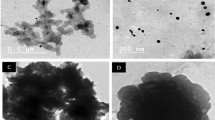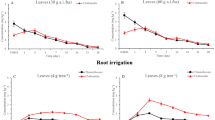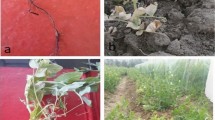Abstract
IN 1807 Bénédict Prévost found that germination of the spores of the wheat bunt fungus (Tilletia caries) in water was inhibited by the presence of submerged pieces of clean metallic copper1. It has long been known that water contained in copper vessels becomes toxic to some species of algæ and bacteria. Since about 1885 many compounds of copper have been used in spraying plants for the control of fungus diseases, but in an extensive search of the literature2, I have not found a single reference to the trial of finely divided metallic copper itself, for this purpose.
This is a preview of subscription content, access via your institution
Access options
Subscribe to this journal
Receive 51 print issues and online access
$199.00 per year
only $3.90 per issue
Buy this article
- Purchase on Springer Link
- Instant access to full article PDF
Prices may be subject to local taxes which are calculated during checkout
Similar content being viewed by others
References
Prévost, B., "Mémoire" (Montauban, 1807).
Large, E. C., "Advance of the Fungi" (Cape, 1940).
Horsfall, J. G., Marsh, R. W., and Martin, H., Ann. App. Biol., 24 867–82 (1937).
Cunningham, G. H., "Plant Protection" (Palmerston North, 1935).
Large, E. C., British Patent No. 493, 148 (1938).
Author information
Authors and Affiliations
Rights and permissions
About this article
Cite this article
LARGE, E. Control of Potato Blight (Phytophthora infestans) by Spraying with Suspensions of Metallic Copper. Nature 151, 80–81 (1943). https://doi.org/10.1038/151080b0
Issue Date:
DOI: https://doi.org/10.1038/151080b0
Comments
By submitting a comment you agree to abide by our Terms and Community Guidelines. If you find something abusive or that does not comply with our terms or guidelines please flag it as inappropriate.



